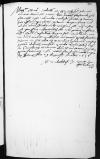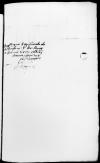List #677
Ioannes DANTISCUS do Sigmund von HERBERSTEINBrussels, 1531-08-29
Rękopiśmienne podstawy źródłowe:
Publikacje:
| ||||||
Tekst + aparat krytyczny + komentarz Zwykły tekst Tekst + komentarz Tekst + aparat krytyczny Ekscerpty dotyczące podróży Dantyszka
Magnifico domino
Magnifice Domine, salutem et commendationem plurimam.
Onero iterum Magnificentiam Vestram hoc litterarum fasciculo[1]. Quam summopere rogo, non velit moleste ferre, quod toties hoc officium praestari petam, repensurus id aliquando omni studio, ubi vicissim Magnificentiae Vestrae usui esse possim. Uberioremque Magnificentiae Vestrae gratiam referet illustrissimus dominus
Ex
Magnificentiae Vestrae deditissimus
[1 ] This fascicule contained letters, unknown to the editors, to Sigismund I and to queen Bona, and an unknown copy of Emperor Charles V’s letter to his personal council. The fascicule reached Cracow on October 10, as seen in the original fair copy of queen Bona’s reply (see BCz, 3465, p. 203-206), unknown to the publishers of AT, XIII (see AT, XIII, No. 355, p. 331, No. 356, p. 332 (printed from copies)). For more about Dantiscus’ correspondence sent through Herberstein, cf. letters No. 15-19,21
[2 ] A Reich diet with the participation of Emperor Charles V was originally to be held in Speyer in the second half of 1531. It ultimately began in Regensburg in April 1532 (cf. letter No. 17, footnote 5, letter No. 18, footnote 19)

